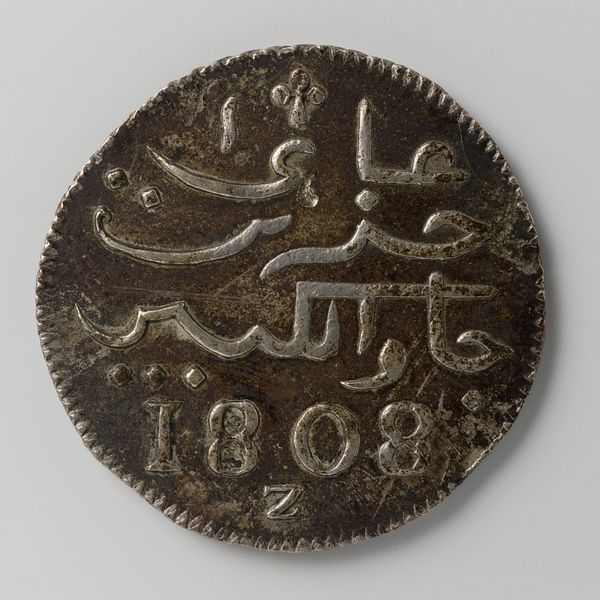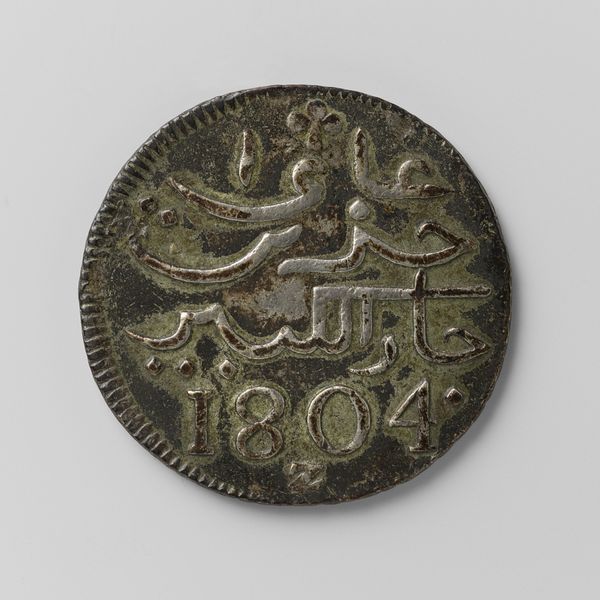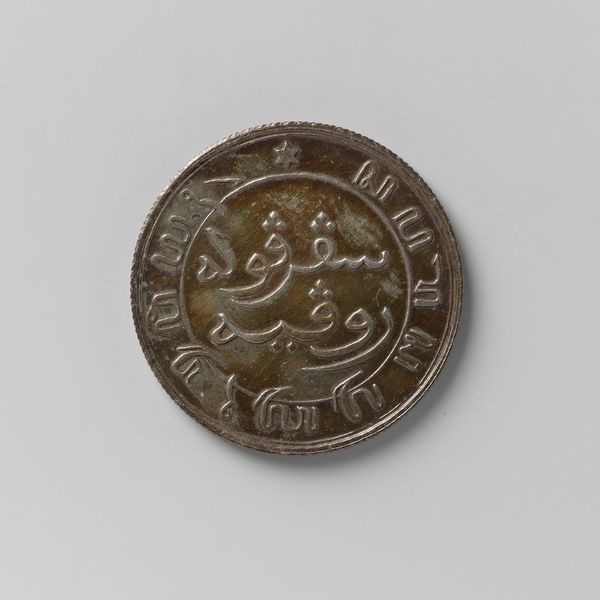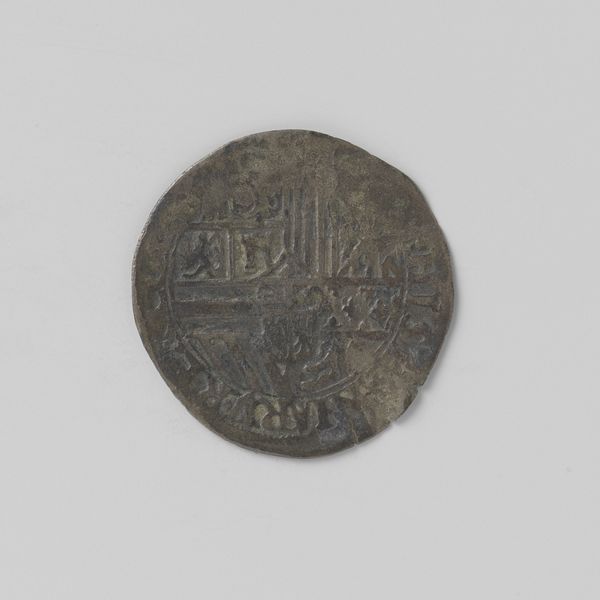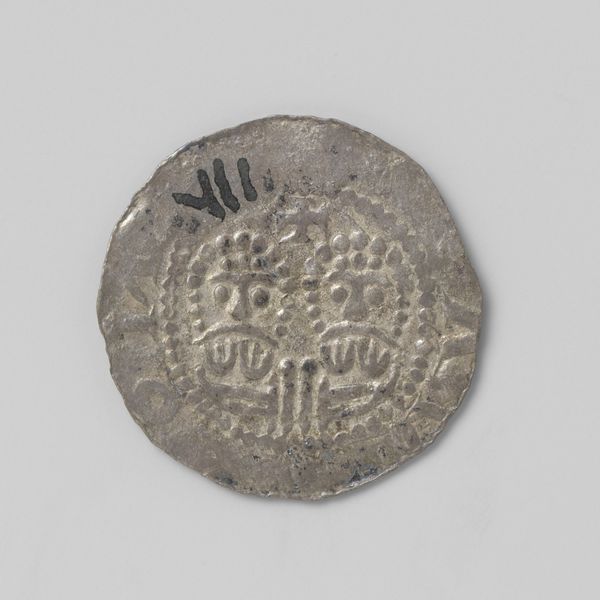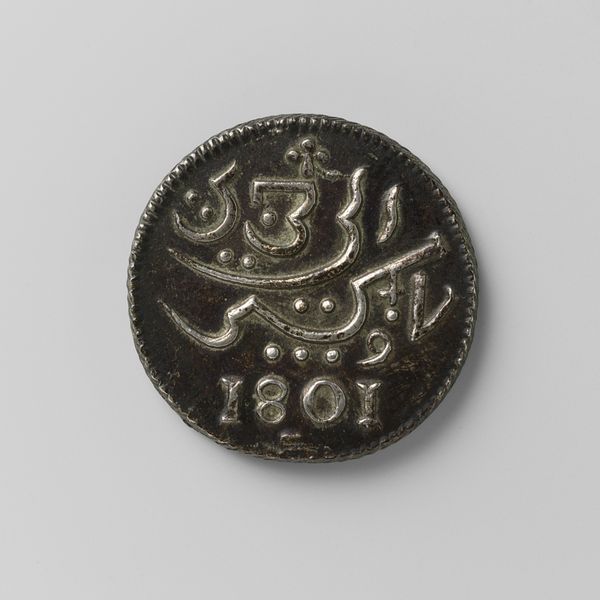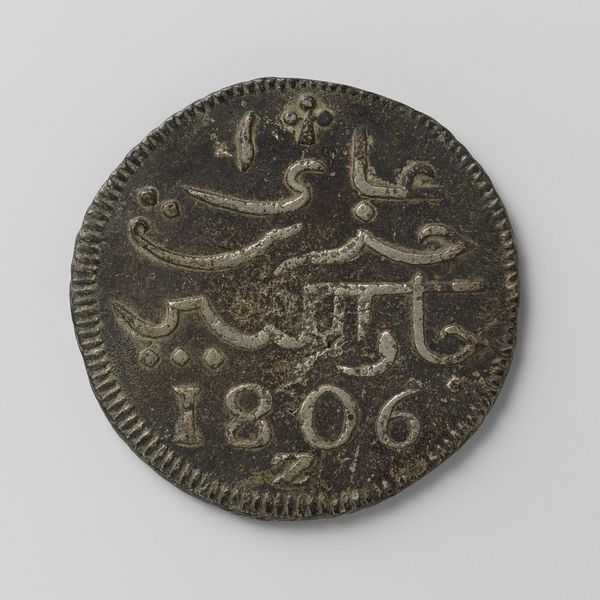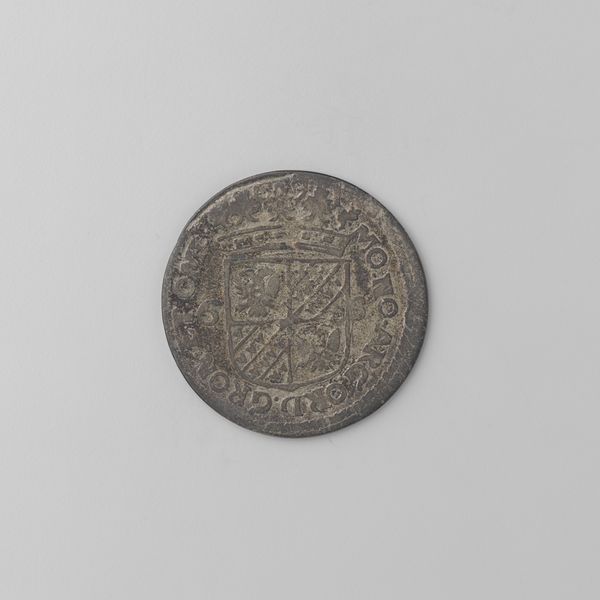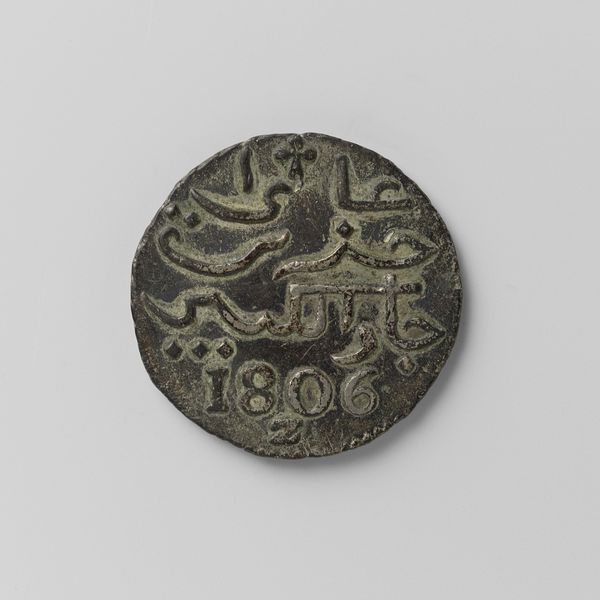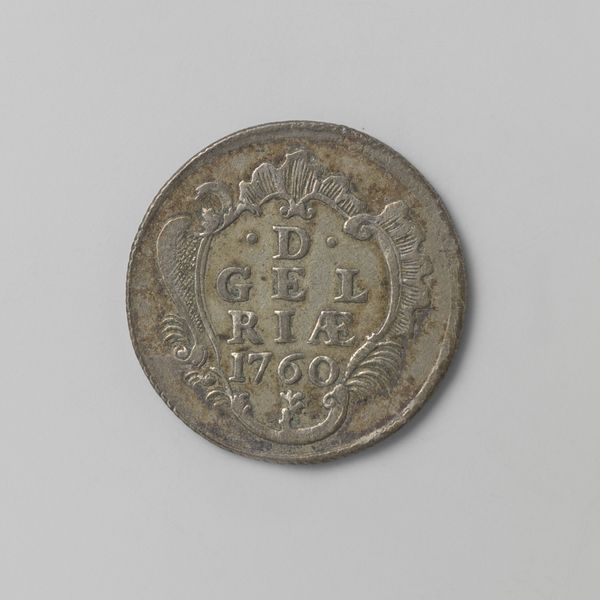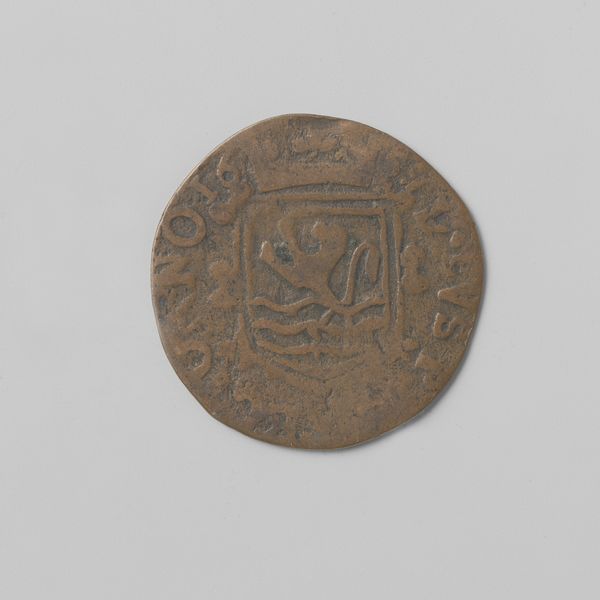
metal, photography
#
still-life-photography
#
metal
#
photography
#
ancient-mediterranean
#
islamic-art
#
coin
Dimensions: diameter 3.2 cm, weight 12.49 gr
Copyright: Rijks Museum: Open Domain
Curator: This photograph presents a silver rupee, a coin originating from Dutch India in Java, dating back to 1805. It’s currently held within the Rijksmuseum's collection. Editor: It feels ancient and burdened somehow, doesn’t it? The coin’s worn surface and the almost archaic script give it such a strong sense of history and the weight of exchange and power, even though it is quite small. Curator: Absolutely. The presence of Islamic calligraphy reminds us of the Dutch East India Company's interactions with and within predominantly Muslim regions. Consider the role of currency in legitimizing colonial power; the silver rupee would have been an instrument in facilitating trade and solidifying control. Editor: And who was benefiting from this trade, and at what cost? This coin represents wealth, but whose wealth? This currency was not just an object of trade, it was also an emblem of the Bataafse Republic's authority in Java, an authority built on resource extraction and the exploitation of local populations. Curator: Indeed. Furthermore, consider the materiality. The choice of silver wasn't arbitrary. Silver held inherent value and symbolized wealth, but also played a critical role in international trade networks. It physically embodies that exchange of wealth, that exercise of financial dominance. Editor: Right, and the very existence of this rupee signifies the reshaping of Javanese society. The local economy had to adapt to colonial financial systems, and existing power structures had to shift in response to foreign commercial ambitions. So even this seemingly simple coin reflects larger economic and political shifts within the region. Curator: Precisely. We see the intersection of commerce, colonial governance, and the symbolic language of power all imprinted on this small piece of metal. Editor: I look at this and think about the many hands it has passed through, and the stories those hands could tell. The power dynamics embedded within such a seemingly mundane object are profound, inviting us to think critically about the enduring legacy of colonial economies. Curator: It is a powerful reminder that even objects as seemingly ordinary as a coin can encapsulate vast, complex histories of social and economic interactions.
Comments
No comments
Be the first to comment and join the conversation on the ultimate creative platform.

